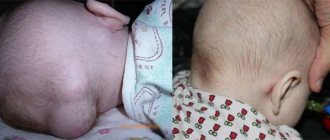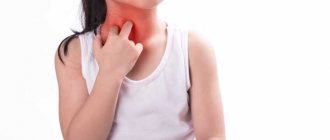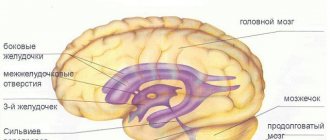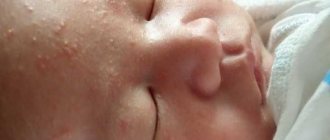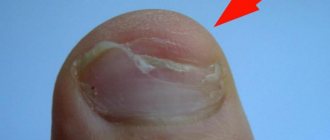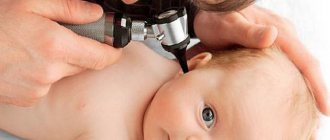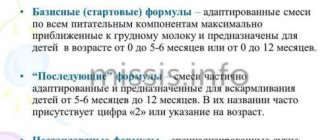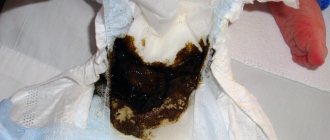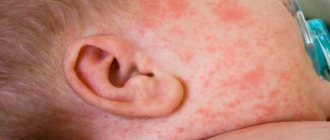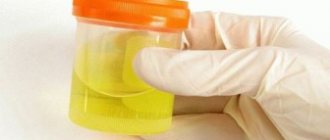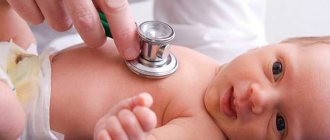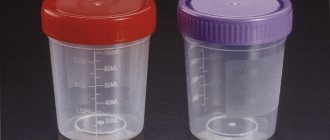Causes of crusts
After birth, the child adapts to the sudden change in the environment for several months. All functions of a fragile body are aimed at adapting to new conditions - including the work of the sebaceous glands. Due to their hyperactivity, flaking of the scalp sometimes occurs. This phenomenon is physiological and does not cause discomfort. Over time, the secretion of skin secretions returns to normal, and the problem disappears without a trace.
Sometimes, in addition to the natural causes of the appearance of scales in a baby, there are other culprits of peeling:
- Allergy. The skin of a newborn can react in this way to an unfamiliar product eaten by the mother, of course, under the condition of breastfeeding. In children on artificial nutrition, switching to another formula often provokes allergies.
- Overheat. Continuous wearing of a cap or cap can cause increased sweating in the baby. Constant humidity and high temperature are factors leading to the appearance of seborrheic crusts.
- Excessive hygiene. Washing your hair too often disrupts the protective functions of the skin, contributing to dryness and tightness of the epidermis. The body's response will be the active work of the sebaceous glands and the subsequent appearance of scales.
- Reaction to cosmetics. A baby's skin is sensitive and prone to irritation. Incorrect care can harm her. For gentle cleansing, it is necessary to select hypoallergenic products created specifically for newborns.
Important! Before trying to remove scales on a child’s head, you should exclude the influence of external factors that provoke the formation of seborrheic dermatitis.
Dry crusts on the skin are, first of all, an aesthetic problem that does not cause any inconvenience to the baby. Without outside intervention, they will gradually go away in 6-12 months. However, many mothers are interested in the question of how to remove scales that spoil the appearance of their beloved child. There are safe ways, which will be discussed below.
Causes
Due to the imbalance and disruption of the sebaceous and sweat glands, the delicate and thin scalp of a newborn loses its ability to fight infections and bacteria. This allows the fungus Malassezia furfur to spread, causing a seborrheic crust to form.
The following factors can lead to this imbalance:
- severe sweating on the child’s head due to overheating;
- lack of proper maternal nutrition;
- allergy to the introduction of complementary foods;
- chronic diseases of the child;
- poor hygiene of the baby's head.
- use of inappropriate bathing products;
- hormonal changes in the body;
- the appearance of an allergic reaction to the formula during artificial feeding;
- weakening of the immune system.
How to get rid of seborrheic scales
When helping a baby cope with peeling, the main thing is not to cause him pain. To safely eliminate the problem, you can use home and medical remedies, depending on your skin condition.
The procedure for removing crusts step by step looks like this:
We recommend reading: Dry skin in a newborn
- Softening. To moisturize the growths, apply vegetable oil or Vaseline to the scalp of the baby. It is better to choose a sterile product for these purposes. Using cotton wool, the product is carefully distributed over the desired area, after which it is left for 30 minutes to act. For greater effectiveness, you should put a clean knitted cap on your baby.
- Massaging. After softening, you need to carefully comb the affected areas with a comb with natural bristles. Do not press with force - the crusts should easily come away from the surface of the skin. You may need to rinse the brush several times during the combing process.
- Bathing. Wash off any remaining oil and crusts with warm water and baby shampoo. It is important to ensure that contaminated water does not get into the eyes - this will cause discomfort to the baby. It is unlikely that you will be able to completely get rid of the growths in one session, so there is no need to repeatedly lather or scrub your scalp.
- Drying. Complete the process as you would a normal bath, gently blotting away the moisture with a towel.
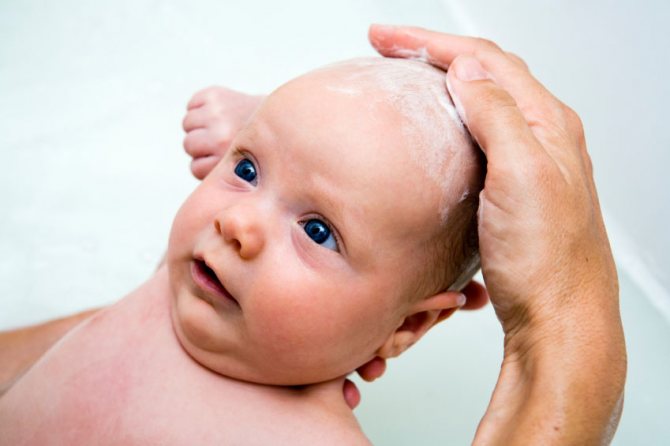
It will likely take several sessions to completely get rid of seborrheic dermatitis.
It is important to remember that combing out the scales should not be repeated every day - this will lead to overdrying of the skin, causing the opposite result. The optimal frequency would be to carry out the procedure no more than once a week.
It is unacceptable to tear off dry growths with nails or a comb - this is fraught with trauma to the skin and subsequent infection.
You can buy a softening agent to eliminate seborrheic crusts at the pharmacy along with instructions for use. Experts advise using such means as a last resort, since they can cause an individual reaction in the baby. It would be better to consult a pediatric dermatologist before using them.
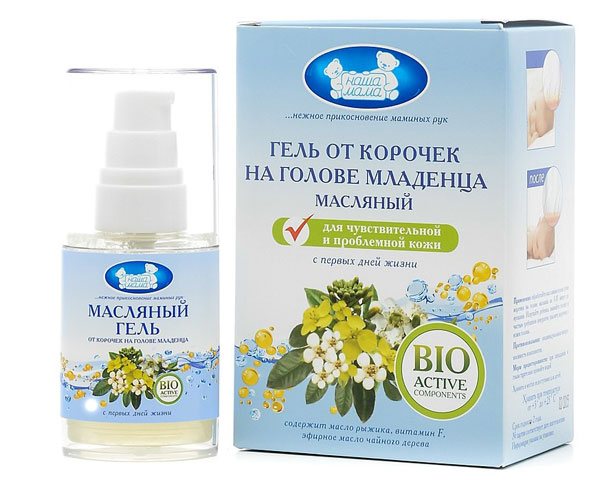
An alternative to the traditional method is the use of a softening medicinal product.
Ways to get rid of a crust on the head
Applying baby cream
You don’t have to touch the crust at all; it will go away on its own over time, but if you decide to remove it, then you need to do it correctly.
Firstly, first you need to steam the skin on your head.
To do this, you need to apply any fatty product (oil or baby cream).
Then you need to put on a cap to create a greenhouse effect.
With this steaming, the crusts on the head swell and soften a little, and are then easy to remove.
Under no circumstances should you rip it off. It is strictly forbidden to try to dry the scales with your nails.
To comb out, use a blunt-toothed comb or a natural-bristled brush. Because sharp teeth can injure thin and delicate baby skin.
After this, you can carry out the bathing procedure and gently massage the head with a sponge, which will finally wash away the remnants of the baby’s seborrheic crust.
It is not advisable to do such procedures too often. Once, maximum twice a week will be enough.
Important! Do not try to start removing crusts without first softening them. This will damage the skin and may cause sores, itching and irritation.
Don't forget that your baby's scalp needs to breathe. Therefore, you should not put warm hats and caps on him.
In a normal climate in the apartment, the child should be without a headdress. And don’t listen to grandmothers and neighbors who say that your baby needs to be kept in a hat at all times. It is not right.
Prevention of scales
If not properly cared for, the crust may reappear even after it has been completely eliminated. Following simple measures will prevent the re-formation of growths:
- Maintaining a healthy indoor microclimate. Regular ventilation and the use of a humidifier are the key to the well-being of any person, especially a newborn. Moist, cool air prevents the baby's skin and mucous membranes from drying out, strengthening local immunity.
- Hardening. Taking air baths has a beneficial effect on the functioning of the entire body.
- Avoiding overheating. You should not dress your baby in a hat or bonnet 24/7—the skin must breathe. In a warm room, the child will be more comfortable without a hat.
- Use of children's cosmetics. You need to take the purchase of shampoo for babies seriously. You should not purchase a product from an unknown brand. Leading manufacturers of baby care lines monitor product safety, offering a wide range of hypoallergenic cosmetics. Such cleansing products will reduce the occurrence of negative reactions to a minimum.
Finding scales on your baby's head is not a reason to panic. To eliminate and prevent them, it is enough to monitor the baby’s hygiene, comfort and nutrition, and soon the problem will disappear forever.
A crust on the head of a 3 year old child. Reasons and methods for deleting
Are you worried about the yellow crust on your child's head? In children under one year of age, this is a common occurrence, but if by the age of three it has not disappeared, then, firstly, you need to understand the reason for its origin. After this, you will be able to choose the right concept for solving this problem on your own, without the intervention of doctors.
Let's first determine the reasons why a child may develop a crust. Most mothers at the age of three months notice the appearance of a yellow crust on their heads in their children. There is no need to panic - this is natural. As a rule, this happens because the baby’s secretion of the sebaceous glands increases. But if the crust on the head of a 3-year-old child still has not gone away, then this is no longer correct, so in this case it is advisable to consult a doctor. Because before a year it should have disappeared. Or perhaps the reason lies in improper care of children's hair.
The most common mistake, due to which the crust on the head of a 3-year-old child still has not disappeared, is that, for fear of hypothermia, you force the child to wear a hat, even in warm weather. As a result, the child's head sweats and this becomes a consequence of the appearance of new crusts. Also, the crust can remain on the baby’s head for quite a long period of time due to the use of cosmetics that are based on unnatural flavors or dyes. They can also result from irritation of the scalp and cause yellow crusts to appear. If you bathe your baby every day, his skin may dry out and natural regulation will be disrupted, thereby reducing the protection of the skin. In some cases, a crust on the head of a 3-year-old child may appear due to an allergic reaction to a new food.
How to get rid of yellow crust.
Inexperienced mothers first of all try to scrape off these same crusts from the baby’s head, but this will not get rid of the problem. It needs to be solved consistently and comprehensively. First, soften your baby's scalp using baby oil. Apply it to your baby's head an hour before bathing him. Wear a cap to prevent oil from getting into your eyes and to keep warm. Before bathing, lightly massage your baby's scalp with a brush that has natural, soft bristles.
When bathing, use only mild shampoos based on natural ingredients. Gently rinse your hair and rinse off the shampoo thoroughly. After bathing, do not dry the child, but simply dry the body, hair and head with a towel.
If, after washing with shampoo, the crust on the head of a 3-year-old child is not completely washed off, do not worry - use a comb and carefully comb the child’s hair, while carefully removing the remnants of the ill-fated crust from the head. Do not forget that scabs on children’s heads do not disappear immediately. In order for this to happen, you will have to repeat this set of measures more than once, perhaps for a couple of weeks, and not provoke a new manifestation of yellow formations on the head.
nutrition for intervertebral hernia is no less important The problem is unfortunately for thousands of women. It’s great that nowadays a hernia can be treated without surgery.
Similar articles
- Cute and scary ghost in the spirit of Halloween
- Causes of diathesis
- Development of a 9 month old baby
- Features of bronchomunal for children
- A baby has a cold. Tips and tricks
Share
